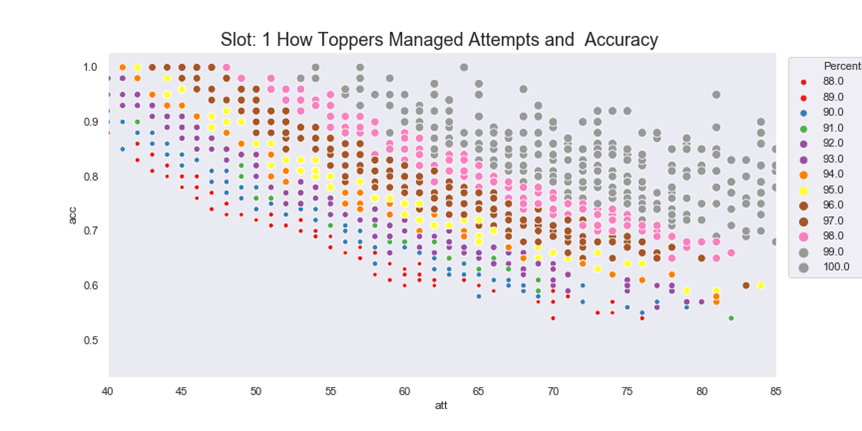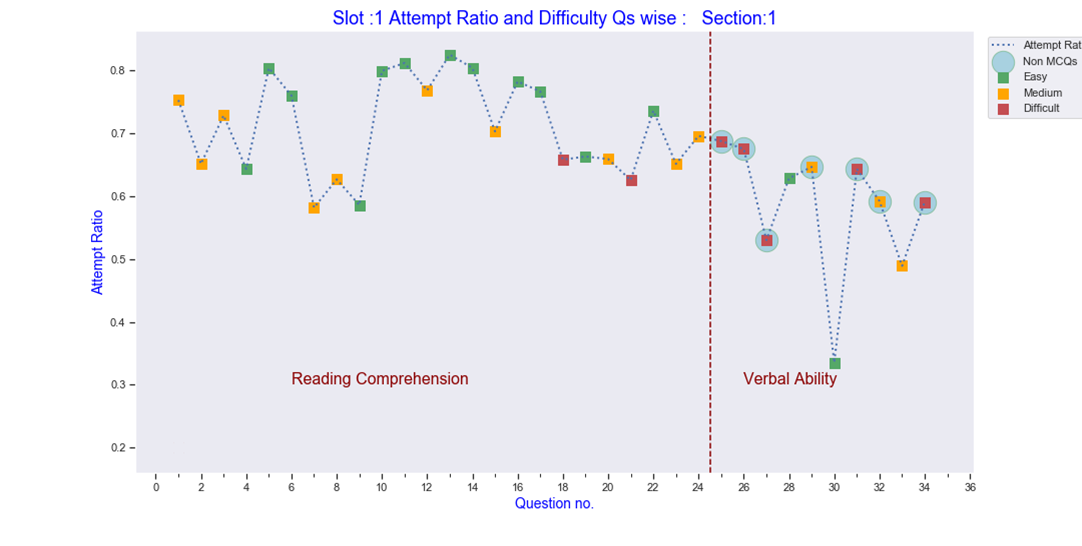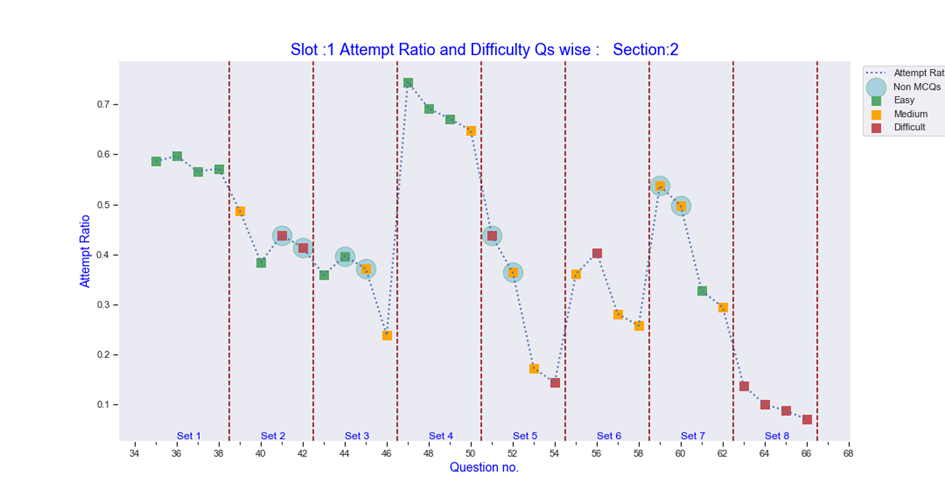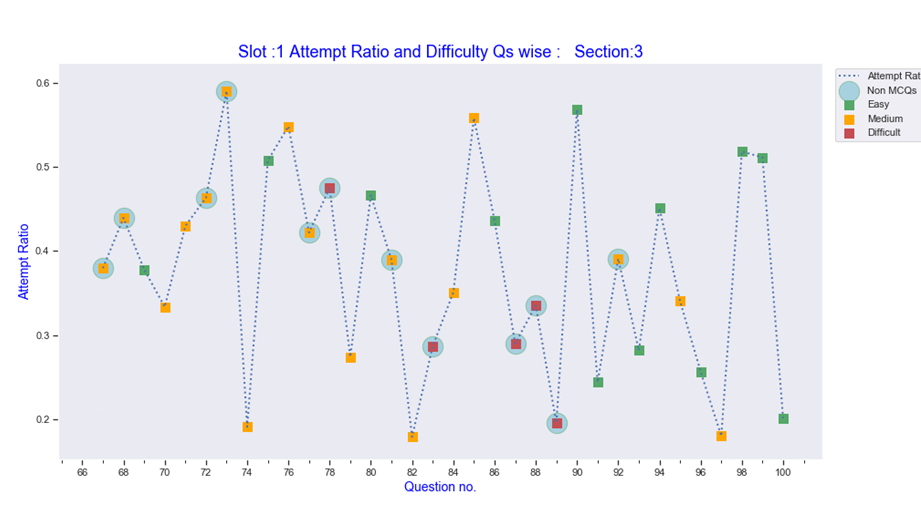Attempts and Accuracy for 90+%ile
The graphs given below give us an interesting perspective of what does it take to get a 90+%ile in CAT.
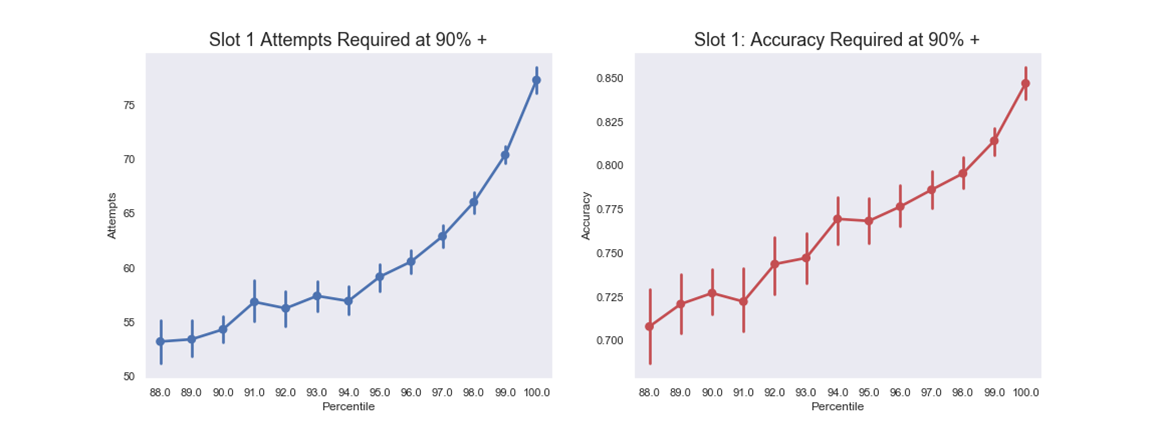
The first graph, on the left hand side, suggests what number of attempts led to what percentile in CAT 2018. Reading this graph is simple. For example, for someone with a 95%ile in CAT 2018, an attempt of roughly 58-60 questions out of 100 questions was required. Similarly, for a 99%ile, 70-72 attempts were required in CAT 2018.
The second graph, on the right hand side, in the image given above, suggests what sort of accuracy leads to what kind of a percentile. Effectively, this graph states that ..............
